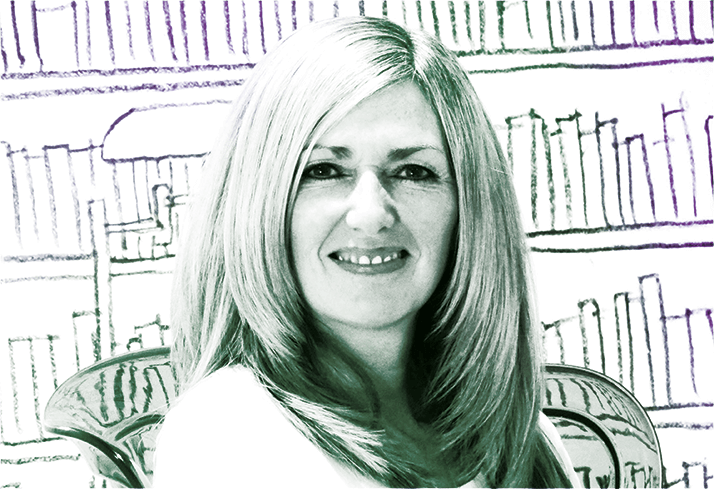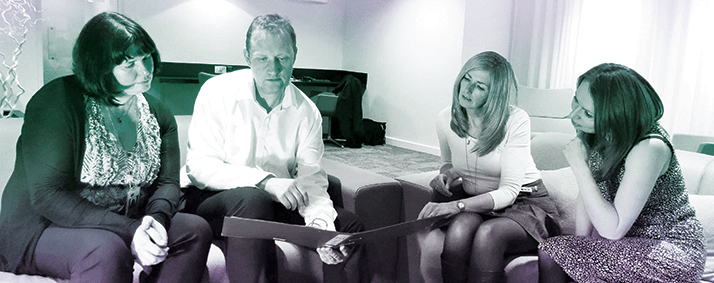
“Why don’t we set up our own bioanalytical contract research organization?” That was the simple question that I posed to a group of close colleagues in 2004, back when I was an associate director of bioanalysis at AstraZeneca. It’s fair to say that the response lacked enthusiasm. After all, why would my coworkers want to give up well-paid, secure jobs to do something much riskier and more demanding? Fast-forward to July 2013 and I was asked the same question, and this time things were different, for at least three reasons. One, an established service provider, ICON Bioanalytical labs in Manchester, UK, was closing, leaving a real gap in the market. Two, skilled people would soon be made redundant both at ICON and at AstraZeneca who announced that it was moving research and development from Cheshire to Cambridge. And three, the BioHub was to open at AstraZeneca’s Alderley Park facility, adding a tempting location to the mix. Yes indeed, times really had changed since that first conversation in 2004. Entrepreneurial urges had been fueled.
After a few phone calls to exchange ideas and concerns, I got together with three recent former colleagues from ICON and AstraZeneca to seriously consider the possibility of launching our own bioanalytical contract research organization (CRO). For the early confabs we met up every Wednesday evening in the “Didsbury office”, otherwise known as a pub called The Slug and Lettuce. After a couple of discussions we added a second weekly get-together, on Sunday afternoons in my kitchen. Little by little, our business plan began to take shape and all four of us agreed that we should go for it: we were going to set up our own bespoke bioanalytical CRO. Reality soon started to set in. We began on several parallel activities, including a search for appropriate lab and office space (as we did not wish to limit options to the BioHub), investigating the possibility of start-up grants, and getting access to training, advice and business support. Some government-run training courses were useful, although they seemed to be aimed at single individuals setting up small businesses: ours was definitely at the more ambitious end of the spectrum. It is strange what sticks in my mind from these courses; one was when the advisor on the bookkeeping course recommended keeping invoices in a shoe box(!) and the second was the absolute horror on people’s faces when, after a show of hands in the social media course, I was identified as the only person in the room not on Facebook. “Is that really a problem?” I asked.
Training was also available via the BioHub in the form of a business Bootcamp event. This was very useful and really made me challenge whether we had a viable business idea. It also drummed into me the importance of managing the business – as opposed to being ‘in’ the business – and the need to focus on ‘sales, sales, sales’. All four of us had spent the majority of our careers in large pharmaceutical companies and CROs, so we were used to the corporate world and everything that it entails. Suddenly, we were way out of our comfort zone. The difference between working in – or even managing – a business unit and running your own company is immense, and I found my time taken up by a multitude of issues that I had never needed to consider before: “How do I do a VAT return? How do I run a payroll? What exactly is Corporation Tax?” Unfortunately, 3am seemed to be the time when I worried about these things the most. And yet, we kept working and progressing.

By January 2014, we had registered the company, becoming the proud owners of Alderley Analytical. We had a logo, our website was up and running, and we had reserved the lab and office space we needed to get started at the BioHub. This felt like a good start, but there was still equipment, rent, accounting, legal issues, insurance, finance and, of course, ‘sales, sales, sales’ (and marketing) to consider. There was still a very long way to go. While conducting market research with potential customers and ex-colleagues, a number of them told me I was “brave” to set out on my journey. If I’m being honest, I could have substituted the word brave with many others (some of them good and others simply not publishable) depending on the challenges and hurdles I was trying to negotiate at the time. In those more difficult moments, I was very pleased to have colleagues who I knew well. Without others to share worries and concerns, things would have certainly been much more difficult – even impossible.
By the end of February, we had signed the lease for the lab and office, purchased general lab equipment from the closing ICON lab and acquired a liquid chromatography-tandem mass spectrometry system. Although it was perched on the bench awaiting direction, when I surveyed my new environment, I felt satisfied that we had arrived – we had a fully functional lab. Let the science begin, I thought. Alas, such thoughts were a little premature. We still had to prepare for Good Laboratory Practice (GLP) accreditation and there were many standard operating procedures (SOPs) to write and forms to design; we had to validate the LC-MS/MS system and the temperature-monitoring system for our fridges and freezers; we had to write company and health and safety policies and procedures. And still the list grew... We had to set up our accounting software, our customer relation management system and our IT infrastructure; we had to get our business cards printed, finalize the website and develop the marketing brochure. And grew… We had to sort out our business banking accounts and banking software, legalize the company, the decision-making, and the shareholdings.
There were the slightly disturbing ‘what if’ scenarios to consider, those things that ‘could in theory’ occur in the future and affect the stability of the company. What if one of us died? What if we all died? What if we couldn’t work together anymore? What if one person wasn’t pulling their weight? Oh – and, of course, we couldn’t forget about ‘sales, sales, sales.’ The next topic to raise its head was ‘investment’. Did we need it now, in the future, or at all? On several occasions, we were asked “What is your our exit strategy?” That question left us a little bamboozled. Exit strategy? Let us get started first.
As I sit writing this on a beautiful evening in July 2014, Alderley Analytical is now doing some real bioanalytical science for a real customer. We have also developed and validated a very sensitive testosterone assay and analyzed some human serum samples. We will soon be moving on to our next project, which will include some exciting science: if successful, we will publish the results. We also have a positive emerging pipeline – and genuine smiles on our faces!

The science aside, we are looking around to see what (if any) grant funding might be available to us. The word ‘investment’ is still in the air. Indeed, interest has been expressed by a couple of potential investors. And, of course, we’re still focused on ‘sales, sales, sales’. It’s too early to say what 2015 will bring but we are quietly optimistic. At the very least, we shall ‘survive’ – but our fingers are firmly crossed for successful execution of our five-year plan. Jump forward to the end of 2018, and we hope to have approximately 50 staff, six LC-MS/MS systems, and several large molecule analyzers, with a matching increase in lab/office space from 1,500 square feet to 7,000 square feet. But whatever happens, I will never regret starting on my journey. I have learned so much and met so many great people along the way. I wouldn’t have been able to get this far without a great deal of support, help and advice.
We are currently a small molecule bioanalytical CRO but I still can’t get used to being called an entrepreneur, despite the fact that people have already used it to describe me. When I think of entrepreneurs I imagine Richard Branson and Alan Sugar but perhaps that’s a generational (and British) perception. If I was younger (and American), I guess my first thoughts might turn to Mark Zuckerberg or Larry Page. Either way, I can honestly say that I still don’t consider myself to be an entrepreneur. Perhaps that is because I am still a scientist at heart and always will be. However, life has definitely changed. I was looking at LinkedIn recently and realized that many of my new connections weren’t scientists; they were accountants, solicitors, corporate finance people and – you’ve guessed it – entrepreneurs. Last week, I had coffee with an acquaintance who is thinking about setting up their own scientific business. The very first question asked was “where do I start?” The answer to that is neither short nor easy – but I gave that my best shot, too.
Elizabeth Thomas is CEO and founder of Alderley Analytical, Cheshire, UK.
- Be thorough with your market research. What problem are you solving? Is your business idea viable?
- Get your website up and running as soon as possible.
- Don’t be scared to ask for advice business, legal, accounting). You will be surprised how much free advice is available.
- Look at Government websites – they can often guide you to small business advisors and free training.
- Get out of the building. It is essential to get your business known and to grow your network.
Five Pitfalls to Avoid
- Try not to spend too much time ‘in’ the business instead of managing it.
- Don’t get stuck in your comfort zone. You will need to take on a diverse range of tasks and challenges.
- Don’t pay full price for goods or services. Negotiate everything and try to get as much free stuff as possible!
- Don’t forget about Business Development and sales, sales, sales. No customers means no business.
- Don’t get disheartened. Find a colleague or mentor to help you meet the challenges.
